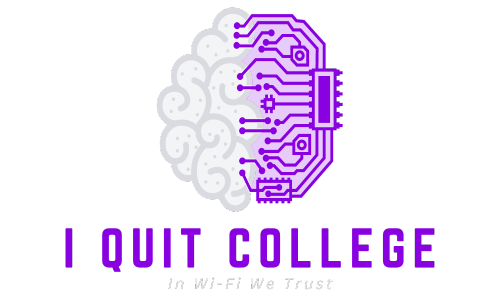When developing a marketing strategy, it is crucial to understand your target market. By conducting thorough audience research and segmentation, you can identify the specific group of people who are most likely to be interested in your products or services. Understanding your target market allows you to tailor your marketing efforts to resonate with their needs and preferences, resulting in a more effective and successful campaign.
Target market research involves analyzing three key areas: your target market, your competition, and the industry. This research helps you identify who your customers are, how to effectively communicate with them, and choose the right marketing channels. Market segmentation plays a vital role in target market research as it allows you to divide the total market into smaller, homogenous groups based on purchasing power, size, and behavior. This segmentation enables businesses to develop separate marketing strategies for different market segments, resulting in more targeted and effective campaigns.
To identify your target market, comprehensive analysis of demographics, geographics, and psychographics is crucial. Demographic segmentation involves classifying groups of people based on common characteristics such as age, gender, ethnicity, education, occupation, income, and family status. Geographic segmentation involves identifying where your target market is located, whether in a specific country, state, city, or rural/urban/suburban setting. Psychographic segmentation involves understanding the values, interests, lifestyles, attitudes, and needs of your target market. This information helps in creating buyer personas, which are general descriptions of the individuals that make up your target market.
Target market segmentation is essential as it allows businesses to create more tailored marketing messages and strategies. It ensures that the marketing mix (product, price, promotion, and place) satisfies the specific needs and preferences of different market segments. Effective segmentation should meet requirements such as being measurable in terms of purchasing power and size, having the ability to communicate and serve the market segment, being potentially profitable, and not changing too quickly. By understanding and implementing target market segmentation, businesses can effectively reach and engage their desired audience.
Identifying your target audience is crucial for several reasons. It allows for marketing efficiency and cost-effectiveness by directing resources to the right people. Personalization is possible when you understand your target audience, allowing for tailored marketing campaigns that resonate with their needs. Understanding your target audience also leads to better product development by meeting their preferences and needs. It provides a competitive advantage by delivering more relevant and compelling marketing messages compared to competitors. Finally, improved communication is achieved when your messaging directly speaks to your target audience, using language and content that resonate with their preferences.
Understanding your target market through effective audience research is crucial for developing a successful marketing strategy. By conducting target market research and segmentation, businesses can identify and understand their ideal customers. This knowledge allows for more targeted and effective marketing efforts, resulting in higher conversion rates and customer satisfaction. By continuously reviewing and updating your understanding of your target audience, you can ensure that your marketing strategies remain relevant and successfully reach your desired audience.
Key Takeaways:
- Conduct thorough audience research and segmentation to understand your target market.
- Analyze your target market, competition, and industry.
- Divide your target market into smaller segments based on demographics, geographics, and psychographics.
- Implement target market segmentation to create tailored marketing strategies.
- Identify your target audience for marketing efficiency, personalization, and improved communication.
The Basics of Target Market Research
When it comes to developing a successful marketing strategy, understanding your target market is key. This involves conducting thorough target market research to gain insights into your customers, competition, and industry. By analyzing these three areas, you can effectively identify your target market, tailor your communication, and choose the right marketing channels.
One important aspect of target market research is market segmentation. This process involves dividing the overall market into smaller, more homogenous groups based on factors such as purchasing power, size, and behavior. By segmenting your market, you can develop separate strategies for each segment, ensuring that your marketing efforts are more targeted and effective.
Let’s take a closer look at each component of target market research:
- Your target market: This includes identifying your ideal customers and understanding their demographics, preferences, and needs.
- Your competition: Analyzing your competitors can provide valuable insights into their target market, positioning, and marketing strategies.
- The industry: Understanding the broader industry landscape helps you identify market trends, opportunities, and potential threats.
Market Segmentation
Market segmentation is a vital part of target market research. It enables businesses to divide the market into distinct segments, allowing for more personalized and targeted marketing strategies. There are various segmentation criteria that can be used:
| Segmentation Criteria | Description |
|---|---|
| Demographics | Dividing the market based on characteristics such as age, gender, income, education, and occupation. |
| Geographics | Segmenting the market based on geographic location, such as country, region, or city. |
| Psychographics | Understanding the interests, values, lifestyles, and attitudes of the target market. |
| Behavioral | Segmenting based on consumer behavior, such as purchasing patterns, usage frequency, and brand loyalty. |

By effectively segmenting the market, businesses can develop tailored marketing strategies that resonate with each segment’s unique needs and preferences. This leads to more successful campaigns, improved customer satisfaction, and ultimately, higher conversion rates.
Identifying Your Target Market
To effectively market your products or services, it is crucial to identify and understand your target market. By conducting a comprehensive analysis of demographics, geographics, and psychographics, you can gain valuable insights into the specific group of individuals who are most likely to be interested in what you have to offer.
Demographic segmentation involves classifying groups of people based on common characteristics such as age, gender, ethnicity, education, occupation, income, and family status. This information helps you paint a clear picture of who your potential customers are and what their needs and preferences might be.
Geographic segmentation plays a significant role in identifying where your target market is located. This could be at a regional, city, or neighborhood level. Understanding where your target audience resides helps in determining the most appropriate locations to reach and engage them effectively.
Psychographic segmentation involves delving into the values, interests, lifestyles, attitudes, and needs of your target market. This deep understanding allows you to create marketing messages and experiences that truly resonate with your audience, making your brand more relatable and appealing to them.
By combining demographic, geographic, and psychographic data, you can develop buyer personas that represent the general characteristics of your target market. These personas help you visualize and relate to the individuals who make up your target audience, enabling you to tailor your marketing strategies and messages accordingly.

The Importance of Target Market Segmentation
Target market segmentation plays a crucial role in the success of any marketing strategy. By dividing the overall market into distinct segments based on common characteristics, businesses can create more tailored marketing messages and strategies.
One key benefit of target market segmentation is the ability to ensure that the marketing mix effectively satisfies the specific needs and preferences of each segment. The marketing mix includes the four P’s: product, price, promotion, and place. Through segmentation, businesses can determine the right product features, pricing strategies, promotional channels, and distribution methods for each market segment.
But what makes a segmentation strategy effective? Firstly, it must be measurable. Segmentation factors should be quantifiable, allowing businesses to assess the purchasing power and size of each segment. This information is crucial for marketing decisions and resource allocation.
Additionally, effective segmentation should enable communication and service. Businesses must be able to reach the identified market segments through channels that are relevant and accessible to them. This ensures that marketing messages are delivered to the right audience in a way that resonates with their preferences.
Moreover, segmentation should target potentially profitable market segments. By focusing efforts on segments that are likely to generate substantial revenue, businesses can maximize their ROI and allocate resources more efficiently.
Lastly, stability is a key consideration in segmentation. It is essential to choose segmentation factors that do not change too quickly, ensuring the relevance and longevity of the marketing strategy.
Common segmentation factors include demographics, geographics, psychographics, and behaviors. Demographic segmentation divides the market based on factors such as age, gender, income, and education. Geographic segmentation focuses on location, dividing the market into different geographical areas. Psychographic segmentation analyzes values, attitudes, interests, and lifestyle choices, while behavioral segmentation considers purchasing patterns, brand loyalty, and usage rate.
By understanding and implementing target market segmentation, businesses can effectively reach and engage their desired audience. It allows for more personalized marketing, improved communication, and better alignment of products and services with customer needs.
“Market segmentation enables businesses to create customized marketing strategies that resonate with the specific needs of different market segments.”
To illustrate the impact of target market segmentation, let’s explore a hypothetical example in the automotive industry:
| Market Segment | Description | Marketing Strategy |
|---|---|---|
| Luxury Car Buyers | Affluent individuals seeking high-end, prestigious vehicles | Emphasize luxury features, premium pricing, and exclusive branding through targeted print and digital campaigns |
| Family-oriented SUV Buyers | Parents looking for spacious and safe vehicles for their families | Highlight safety features, family-friendly amenities, and competitive pricing through targeted TV and online advertisements |
| Environmentally Conscious Buyers | Consumers focused on eco-friendly options | Emphasize fuel efficiency, electric or hybrid options, and sustainability initiatives through targeted social media and online content |
The table above demonstrates how target market segmentation helps businesses align their marketing strategies with the specific needs and preferences of different customer segments. By tailoring the messaging and channels to each segment, businesses can increase their chances of success and drive higher engagement and conversions.
By effectively implementing target market segmentation, businesses can unlock the power of tailored marketing strategies, leading to increased brand awareness, customer loyalty, and overall business growth.
Why Identifying Your Target Audience Is Crucial
Identifying your target audience is crucial for several reasons. It allows for marketing efficiency and cost-effectiveness by directing resources to the right people. Personalization is possible when you understand your target audience, allowing for tailored marketing campaigns that resonate with their needs. Understanding your target audience also leads to better product development by meeting their preferences and needs. It provides a competitive advantage by delivering more relevant and compelling marketing messages compared to competitors. Finally, improved communication is achieved when your messaging directly speaks to your target audience, using language and content that resonate with their preferences.
By honing in on your target audience, you can optimize your marketing efforts and achieve higher conversion rates. Instead of casting a wide net and hoping to reach anyone and everyone, understanding your target audience allows you to focus your resources on the individuals who are most likely to become your customers. This targeted approach saves both time and money, as you can tailor your messaging to specifically address their pain points and motivations.
Personalization is a key aspect of effective marketing, and it is only achievable when you have a deep understanding of your target audience. By identifying their preferences, behaviors, and demographics, you can create personalized experiences that resonate with their specific needs. Whether it’s through personalized email campaigns, targeted advertisements, or customized product recommendations, personalization enhances the customer experience and establishes a stronger connection with your audience.
Benefits of Identifying Your Target Audience
“When you understand your target audience, you can create better products, services, and marketing campaigns that truly meet their needs and desires.”
Another benefit of identifying your target audience is improved product development. By understanding your customers’ preferences, pain points, and aspirations, you can tailor your products or services to meet their specific needs. This customer-centric approach ensures that you are not wasting resources on developing products that do not resonate with your audience, and instead, focus on creating solutions that address their unique challenges.
Furthermore, understanding your target audience provides a competitive advantage. By delivering more relevant and compelling marketing messages than your competitors, you can position yourself as the go-to solution provider in your industry. This differentiation builds trust and credibility with your audience, increasing the likelihood that they will choose your brand over others.
Improved Communication with Your Target Audience
When your messaging directly speaks to your target audience, you can establish a deeper connection and foster improved communication. By using language and content that resonate with their preferences, you can create a sense of familiarity and understanding. This not only increases engagement but also builds a community around your brand.
Improved communication also leads to valuable feedback and insights from your target audience. By actively listening to their needs and concerns, you can gather valuable feedback that can inform your product development, marketing strategies, and overall business decisions. This continuous feedback loop ensures that your brand remains relevant and customer-focused.
| Benefits of Identifying Your Target Audience | |
|---|---|
| Marketing efficiency and cost-effectiveness | By directing resources to the right people, businesses can optimize their marketing efforts and achieve higher conversion rates. |
| Personalization | Understanding the target audience allows for tailored marketing campaigns that resonate with their needs and preferences. |
| Product development | By meeting the preferences and needs of the target audience, businesses can create better products and services. |
| Competitive advantage | Delivering more relevant and compelling marketing messages than competitors can position businesses as industry leaders. |
| Improved communication | Directly speaking to the target audience using language and content that resonate with their preferences. |
Conclusion
Understanding your target market is the cornerstone of developing a successful marketing strategy. Through effective audience research and segmentation, businesses can gain valuable insights into their ideal customers, their needs, and preferences. Armed with this knowledge, you can create more targeted and impactful marketing campaigns that resonate with your audience and drive higher conversion rates.
Continuous review and analysis of your target market is essential to ensure the ongoing relevance and effectiveness of your marketing strategies. By staying up-to-date with your audience’s changing behaviors, preferences, and needs, you can adapt your approach and maintain a competitive edge in the market. Regular customer analysis will allow you to identify new opportunities and adjust your marketing efforts accordingly.
Remember, the success of your marketing strategy relies on your ability to understand and connect with your target audience. By investing in thorough audience research, segmentation, and analysis, you can position your business for growth and build lasting relationships with your customers.






